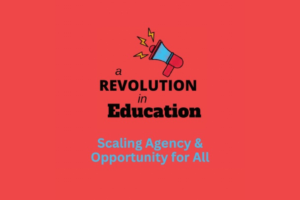Innovation & Improvement Takes a Sustained Push

We have a great chance to boost achievement and completion rates but it will take sustained leadership–that was one of the findings of the the three year Smart Cities investigation.
Unfortunately, the last twelve months have been marked by what appears to be an uptick in talented and committed state and district leaders being fired or leaving under duress.
I visited with teacher leaders in Charlotte this week where three months ago superintendent Heath Morrison was forced out after a short stint–and just 30 months after being named national superintendent of the year for his work in Washoe County Nevada. Fortunately the district is now guided by talented veteran educators Ann Clark and Valerie Truesdale.
Equally surprising, Hillsborough superintendent Mary Ellen Elia was fired last month. The local paper reported that, “The board voted 4-3 to terminate Elia’s contract, despite Elia being recently named [Florida and national finalist for] Superintendent of the Year.” (See our feature on Elia’s leadership).
I spoke with Josh Starr this week in his last few days as Montgomery County superintendent after what was called a mutual parting of the ways from the board. Unfortunately the innovative student support system that Josh so passionately supported will probably never be implemented.
Add Deasy’s departure from LA and Johnson’s ouster in Minneapolis and it feels like a trend brought on by a job that’s getting tougher and boards that are getting more political.
Unfortunately Starr’s 3.5 year term is about average for urban superintendents. The Council of the Great City Schools found that the average tenure for superintendents fell from 3.6 years in 2010 to 3.2 years in 2014–and that’s a disaster for improvement and innovation.
The last decade taught us that building and seeing the fruits of an improvement agenda takes a sustained leadership–the map of Broad Prize winning districts over the last decade is evidence. It takes time to develop, implement and measure the success of new interventions. Launching a new high school can take six years from plan to the first graduating cohort–a decade before you know what the college completion rate.
There is not only a revolving door at the district level. As Andrew Ujifusa reported, twenty-nine states have changed chiefs in the last two years. In their place anti-reformers have been appointed and elected (e.g., Arizona’s Superintendent Diane Douglas and Indiana’s Glenda Ritz). Andy Smarick thinks it might be the end of an era of reform–a disconcerting trend.
A quick trip to Houston this week was a reminder that improvement and innovation takes leadership sustained over time. Terry Grier has had time to build a solid team and develop thoughtful initiatives. Partners like A+ Challenge, Houston Endowment and the coopetition of well-lead networks like KIPP and YES have led to widespread improvement in Houston. (See Houston: As Good as it Gets.)
Our kids deserve thoughtful sustained leadership.







Tom Vander Ark
Add Charleston SC's Nancy McGinley to the list of recently ousted superintendents in high performing districts:
http://www.charlestoncitypaper.com/charleston/was-ousted-school-district-superintendent-nancy-mcginley-a-saint-a-despot-or-a-victim/Content?oid=5051764